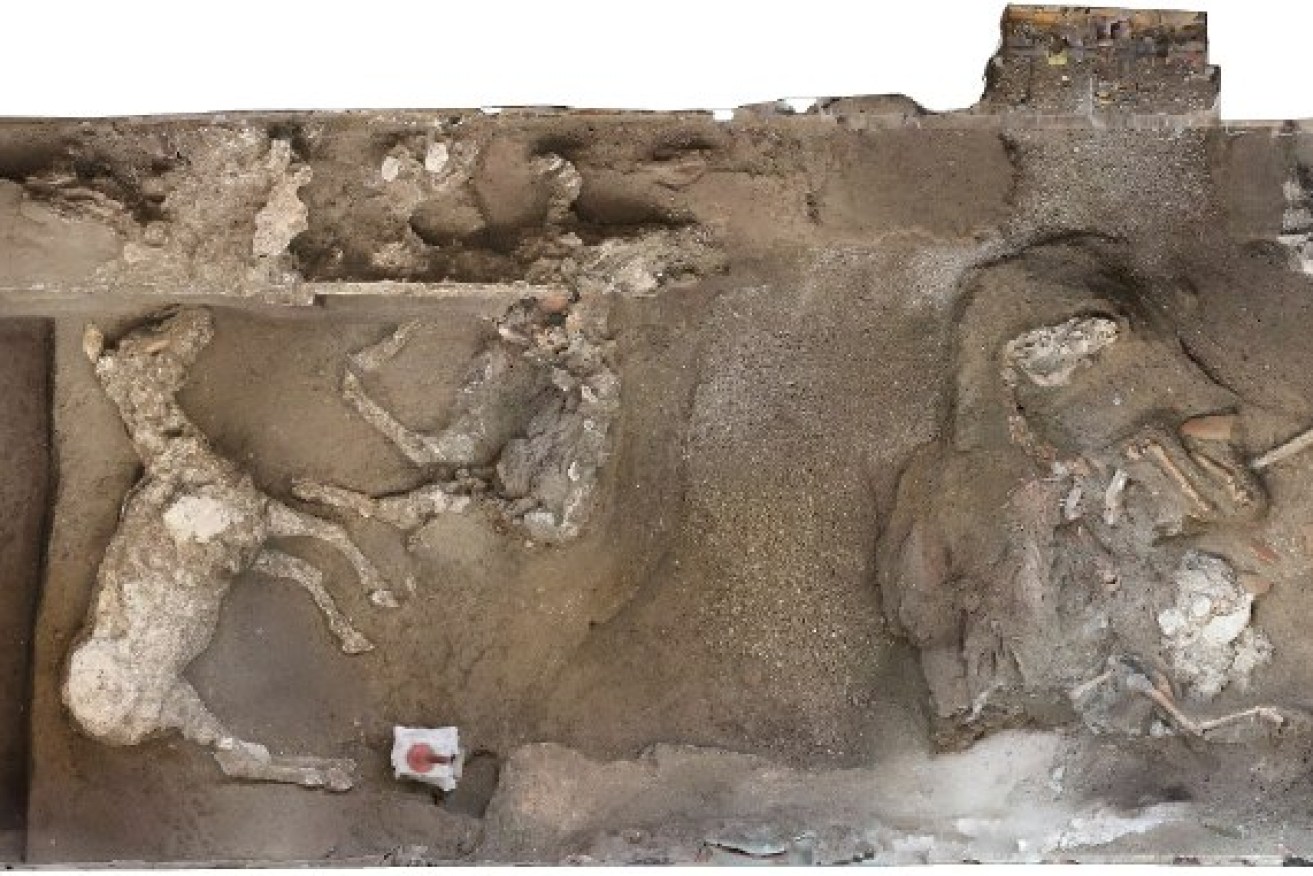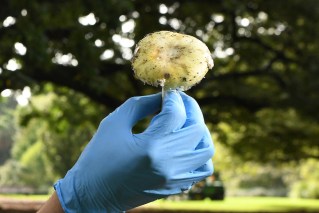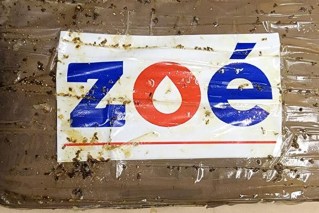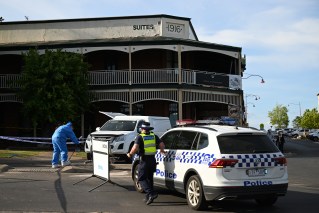A massive investigation into tomb-raiders at the charred Italian city of Pompeii ended with the arrest of dozens of art dealers, mafia hoodlums and spade-wielding chancers.
It also led to the discovery of three ancient horses, one of them saddled up and ready to flee the eruption of Mt Vesuvius in 79AD. They are the first horses to be found at the site.
The discovery was made about 700 metres north-west of the walls of Pompeii, in an area called the Civita Giuliana, a tiny suburb of the time, the remains of which were partly investigated in the early 20th century, only to be sealed off in the 1950s.

Archaeologists work on the resurrection of three horses in a stable outside Pompeii. Photo: Archaeological Park of Pompeii/Cesare Abate
The horses, one of them sporting the remains of an “elaborate military harness” were found in a stable under a grand villa – a small farm, really – that presumably belonged to a military commander. Others were found with metal bits in the remains of their mouths suggesting they too were being prepared for flight from the eruption.
Remains of a general’s villa
The villa is remarkably well preserved, featured “richly frescoed and furnished rooms, and sumptuous sloping terraces facing onto the Gulf of Naples and Capri, as well as an efficient servants’ quarters, with a farmyard, oil and wine warehouses and densely cultivated lands,” according to a statement from the Archaeological Park of Pompeii.
The first horse, covered in ash and pumice, was found in May and has since been inflated from an outline to a full-horse shape using a plaster technique first developed in the 19th century, when diggings at Pompeii took on a more scientific, and less destructive, methodology.

Director-general Massimo Osanna amid the remains, says the site may eventually be opened to the public. Photo: Archaeological Park of PompeiCesare Abate
It was this technique that allowed the shape of Pompeii’s victims, including a famous chained dog – incinerated by extreme heat rather than killed by suffocation, according to recent research – to be resurrected within the confines of their hardened shell of ash.
Grave robbers probably stole one of the saddles
The park said that one of the horses was found lying on its right side, with the skull resting on the front left leg.
“Presumably tied to the trough, it was unable to struggle and free itself.”
A second horse lies sprawled on its left side, with an iron bit preserved under the jaw. Because of the tunnels dug by tombolari (grave robbers), along with the cementing up of the cavities, it was impossible to create a cast of the third horse.
During the excavation of the body, four pieces of conifer-wood finds, coated in bronze lamina and half-moon shaped, were found on the the rib cage.
A fifth object consisting of three hooks with rivets connected by a ring to a disc, also in bronze, was recovered from under the belly, near the hind limbs.
The park said the shape of these elements, and comparisons found in literature, suggest that they belong to a saddle of a type used by Romans since the 1st century AD, particularly in military parades.
The saddle consisted of a wooden structure with four horns, two front and two rear, covered with bronze plates which gave stability to the rider in an era prior to the adoption of stirrups.

Recovering the skeleton of one of the horses. Remains of a metal bit were found in the horse’s teeth, suggesting it was being prepared for flight. Photo: Archaeological Park of PompeiiCesare Abate
Quoted in the statement was the park’s director-general Massimo Osanna who said: “The three horses, perhaps like the first which was discovered and analysed, must have belonged to the ‘noblest breed’ of display animals, as indicated by their imposing size – likely the result of selective breeding – and the quality of their iron and bronze harnesses.”
In fact, the Pompeii horses, standing at 1.5 metres at the shoulder blades, were small compared with today’s thoroughbreds – but were impressive for the time, suggesting people were selectively breeding horses in the Pompeii region.
It’s been a remarkable year for discoveries at Pompeii, including a gorgeous fresco illustration of the myth of Leda and the Swan.
Mr Osanna said that in 2019, €2 million will be allocated for the expropriation of land and continuation of excavations of the Civita Giuliana , with a view to an eventual opening to the public.










